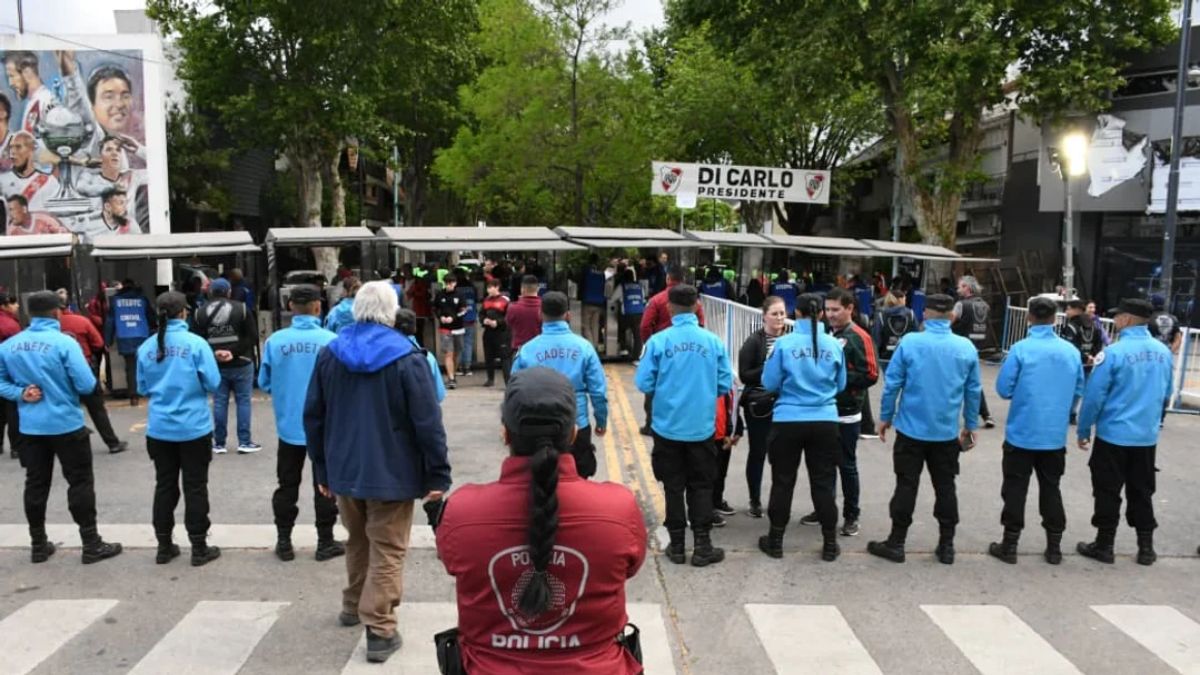“On the one hand, cubism, of which Picasso together with Braque were the driving forces, was essential for the construction of the paradigm of modern art. A language that was intensely nourished by African art, from which Picasso continued to take advantage, to the point that, Taking the logic of this relationship to an extreme, we could think of Picasso as a peripheral artist with respect to African art”, Giunta points out to Télam, and specifies about Latin America: “Picasso and cubism were central in the language of the first half of the 20th century”, being “present in the Latin American vanguards, and in the works of many artists of the first half of the century”.
Another answer is decanted in two central exhibitions of Picasso’s works such as the one in 1944 in Mexico “organized by the Society of Modern Art, with works from the Museum of Modern Art in New York (MoMA) and other museums and private collections mainly from the United States, and in which Juan Larrea or the shipment curated by Maurice Jardot had an intervention for the II Biennial of San Pablo, in 1953, which was the only time that Guernica was exhibited in Latin America”, he highlights.
“Guernica” was a “fundamental influence”, expressed on the large canvas kept by the Reina Sofía Museum in Madrid that only went to Spain in 1981, now without Franco in power, a condition of the artist living in France who did not return to the Fascist Spain. Since 1939, the work “was exhibited, on loan, in the rooms of MoMA.” There it was “observed and admired by Latin American artists, giving rise to works that sought to emulate its size, its forcefulness, its references to war,” says the researcher.
The impact of this icon is revealed in works such as “Bomba en picada y tanque” (1940) by the Mexican muralist José Clemente Orozco, or in the Biblical Series (1942) and “Retirantes” (1944) by the Brazilian Candido Portinari, lists Giunta, and indicates that “in another line of reading the impact produced I would place the painting ‘The Jungle’ by Wifredo Lam, from 1944”.
And further on, “the great mural that Beatriz González created in Colombia in 1981, on the occasion of the first centenary of Picasso’s birth. A mural longer than the original and about which the artist keeps a diary that she emulates, the photographic diary that Dora Maar made of the process of Guernica”, although there are also quotes from Antonio Berni, Carla Ripey, among many other artists, explains Giunta.
“‘Guernica’ has a meaning that is updated with each war, with each episode of violence in the world”, he explains about the relevance of the work that testifies to the German bombardment of the Basque city, in support of the Falangist forces. And he maintains: “The painting, due to its formal composition, strongly articulated by diagonals, can be interpreted as a paradigm of the meditative structures of memory, present in museums of memory, or in the Park of Memory”, analyzes the critic.
For the author of “El Guernica de Picasso” (2009) or “Contra el canón” (2020), among other books, “the ways of understanding Picasso’s relationship with Latin America are multiple and sustained over time.” Among these examples, he cites the exhibition that opened this year’s season at the Museo Nacional de Bellas Artes with more than 30 drawings by the artist belonging to the institution’s collection, where “the history of Jorge Romero Brest’s initiative comes together, when he assumed the direction of the Museum in 1956 during the self-styled Liberating Revolution, to create a Pro-Picasso Commission to acquire works by the artist”, he indicates.
Giunta also says that the simultaneous contemporary exhibitions held in different countries “are another way of visualizing Picasso’s current events, undoubtedly reactivated by feminism, such as the one prepared by the Brooklyn Museum that focuses on his relationship with women, inviting Hannah Gadsby, who has a famous monologue against Picasso, to join the curatorial team”.
Should I remind him as an artist or consider his human side with his mistakes and successes? “Separating the work from the life of the artist is a possibility and a perspective that privileges the effects, contexts, circulation and interpretation of the work itself, rather than the biography. A Barthesian perspective, linked to the idea of death of the author -says the essayist-. Of course, in the case of Picasso it is very difficult to separate the work from the biography, because his personal life has always been the object of extreme attention and because he has painted subjects related to his life”.
From his personal perspective, it is feasible “to write about his work without considering his biography, in ethical terms, judging his behavior to analyze it from there.” But the presence of Dora Maar cannot be ignored when Picasso was painting “Guernica”, which is why he wonders if “it really matters to judge the relationship with her or with Marie-Therese Walter, mother of his daughter Maia” or rather what On the contrary, considering the centrality of Dora Maar “in understanding the political iconography of ‘Guernica’ and the changes that took place in the work and that she recorded in her photographic chronicle,” she points out.
“Dora Maar did not arrive at the studio and photograph the state of the painting at that time. She was in the workshop, she photographed Picasso in other places in the workshop and she herself worked in the workshop, something that recently available photographs reveal,” she analyzes.
In this light, this relationship can be understood “like that of two artists working on a political mission”, such as the commission made by the State to Picasso for the Republic pavilion at the 1937 Paris International Fair, which “was a political mission” and Maar collaborated “very actively in the realization” of the work.
“So, rather than insist on the supposed rivalry between her and Marie-Therese, I prefer to analyze that particular relationship of debate and collaboration between two artists. Dora Maar as an intellectual rather than as a lover”, she affirms.
“Picasso is always thought of as a temperamental artist, who exercised his power over others. But he could be thought of as an artist scared to death when the Germans occupy Paris, thinking that he could be deported and shot in Spain, where the war had just been defeated. Republic”, says Giunta and continues: “an artist who applied for French nationality and was denied it, an artist who did not want to travel, who did not go into exile during the war like Breton, Lam or Max Ernst, and who did not have the support of France in the immediate postwar period due to its adherence to the Communist Party”, he indicates.
“All this context makes it possible to think if he did not carry out the series of the women of Algeria as a way of introducing the insurrection in the Museum of Decorative Art in Paris, in the first exhibition that France organizes to honor Picasso’s half century in this country. postcolonial that had just exploded in Algeria. Africa appears again in his work, and it is no longer a loan, an influence, but a multiplication of the uncomfortable word Algeria for colonial France in 15 paintings and numerous drawings”.
Considering his influence from the decolonial point of view “is possible and necessary. On the one hand, thinking of Picasso as an heir to Africa upsets the way in which the history of modern art has traditionally been narrated, and allows us to review a very urgent and current issue linked to the restitutions of works from Africa, transferred to Europe after the (colonial) division of Africa at the end of the 19th century, deposited in the ethnographic and art museums of Europe”, says Giunta.
What did it take, how was the exchange between Africa and Europe? “The whole relationship between Picasso and Africa could be rethought instead of the stereotyped simplification that repeats that Picasso and Braque were inspired by African sculpture to invent Cubism”, he affirms.
Criticism, explains that one should “dismantle a history of 20th century art centered on Picasso and Duchamp” and aspire that “this history would stop being based on iconic figures to give way to a much more complex one, which reviews a story as reductive as that of modern art, gestated in a few cities in Europe and then in New York”.
Source: Ambito
I am an author and journalist who has worked in the entertainment industry for over a decade. I currently work as a news editor at a major news website, and my focus is on covering the latest trends in entertainment. I also write occasional pieces for other outlets, and have authored two books about the entertainment industry.




